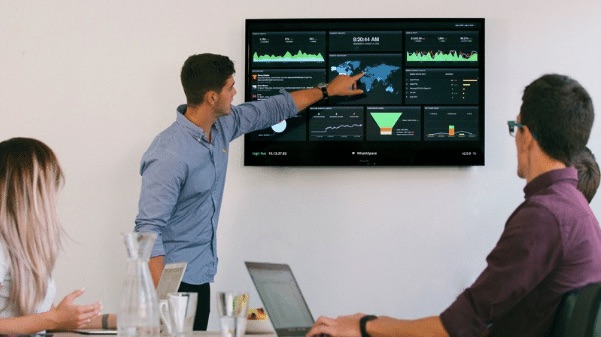4 Common Mistakes To Avoid When Using Dashboards
Make the most out of your office dashboard screens


Dashboards are extremely useful in situations where a user needs to have a lot of information condensed into a single screen, this is however only a given if you are using them correctly.
Unfortunately, too many companies end up with custom dashboards only to find them next to unusable because they are either too complicated, too basic or simply trying to do way to much to be useful.
If you are thinking of setting up a dashboard for your business, here are four mistakes to avoid:
1. Thinking form over function
Sure, the design has its part to play in your dashboard. However, it should not be more important than the function of the tool! After all, even if you have the most appealing dashboard filled with animations and colors, it will be ineffective if it does not display the right information. Plus, these little aesthetic enhancements can be distracting to the viewer, which hurts the dashboards usefulness.
When you are creating your custom dashboard, make sure that it has all the features users will need and has the ability to display the right information in the most simple way possible. When it comes to aesthetics, try to maintain a minimalist approach. Sure, you can still polish the dashboard to make it modern and sleek but stay away from unnecessary additions.
Generally speaking, keep it simple, keep it clean.
2. Providing too much or too little information
On the one hand, too much information can quickly clutter a dashboard, making everything harder to understand clearly and more than likely causing the charts and figures to be displayed in such a compact format, it's difficult to read unless up close.
On the other hand, too little information means that the user does not get the data they need to support their decisions and the dashboard is likely to not recieve a whole lot of attention
If you want to ensure that your dashboard does not have too much or too little information, make sure that you can answer any question users might have within five seconds. If it takes longer, you will want to rethink your dashboard design.
3. Displaying outdated information
The amount of information displayed is important, but also equally as important is how old the information is. For instance, if your dashboards job is to alert you about high priority incidents, then you want to ensure you're displaying current data so you can make informed decisions,
Sometimes this is easier than it sounds, so you may want to ensure you display date and time labels to any figures and charts so you display so everyone knows if they're reading out dated data.
Out dated data should be just as much of a warning as anything else as this essentially means you're flying blind until the data is updated. This should be appropriately represented on the dashboard just like any other alarm or alert
4. Showing the wrong information
Perhaps the worst thing that your dashboard can do is to display the wrong information. The most obvious consequence of this is that you will not be able to make the right decisions for the business, which can lead to other problems like incurring more debt.
Another way your dashboard can display the wrong information is by displaying the right information to the wrong people. Fortunately, this can quickly be addressed by allowing for dashboards to be customized so that the user can choose what information they want to be displayed or hidden.
Wrapping Up
Avoiding common mistakes made when using dashboards is vital to you and your business so that you don’t waste time and money. A good dashboard is a powerful tool, but it's also very easy to get it wrong, which can affect business operations and generally slow the effectiveness of your teams.
Start simple, clean and clear interfaces work best and you can gradually add to them over time, just be sure to not over clutter your dashboard screens. Perform a basic assessment each time you add more charts and widgets to your dashboards, aks your self "do we still need this?" for each element on the page.
Are you looking for cloud-based multi-screen display software to present your dashboards? VuePilot is a simple powerful tool to remotely control and display your office dashboard screns, managed from an online dashbord. Take a look at our features page and get started with a free 14 day trial today.
